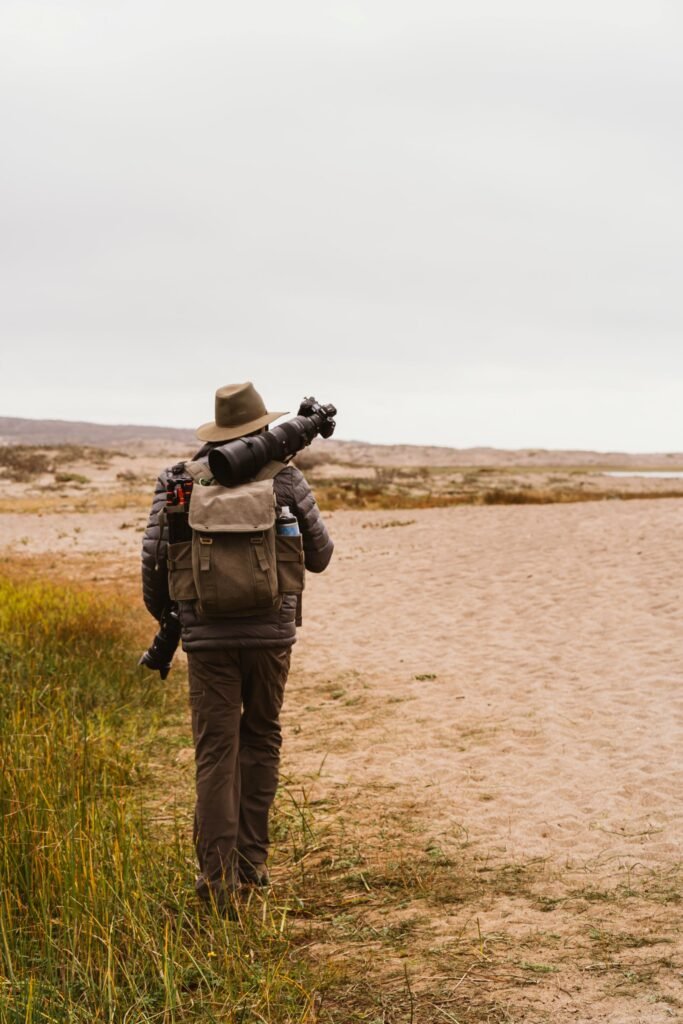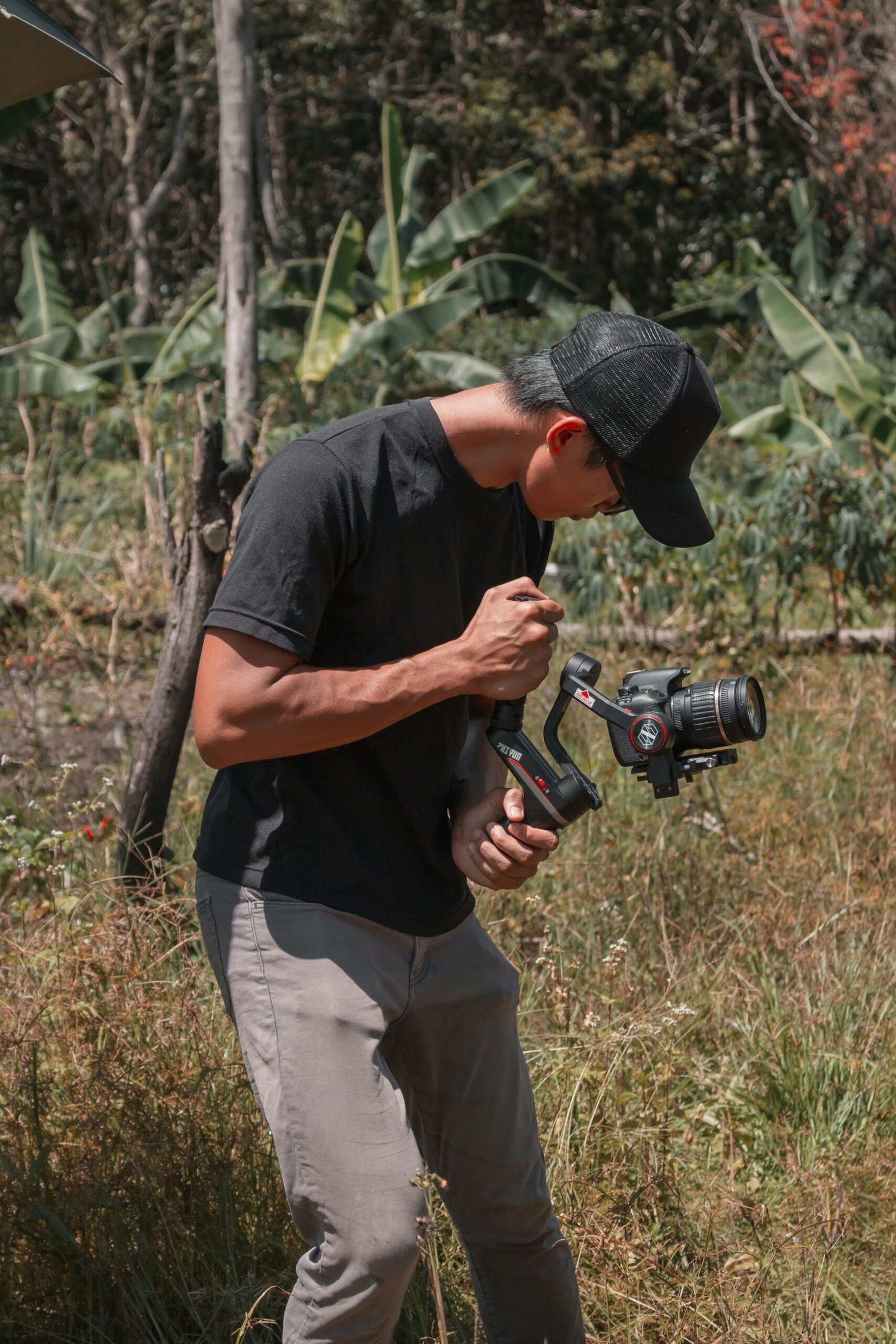A Peek Behind the Camera
A Peek Behind the Camera. Have you ever wondered what it takes to be a successful photographer? Is it just about owning a fancy camera and clicking the shutter button? Or is there something more to this art form that we often overlook? In this blog post, we’ll take a peek behind the camera and explore the world of photography like never before. From understanding lighting and composition to capturing the right emotions in your subjects, we’ll uncover the secrets of being a skilled photographer. So grab your cameras and let’s dive in!
The Secret Life of a Photographer: Behind the Camera
Behind the Camera lies a world of creativity, passion, and hard work. A photographer’s job is not just about clicking pictures but capturing moments that tell a story. It requires a keen eye for detail, an understanding of light and composition, and the ability to connect with people. A photographer must be willing to go the extra mile to get the perfect shot, whether it means climbing a mountain or lying on the ground.
The life of a photographer is not always glamorous; it involves long hours of editing, marketing, and networking. However, the satisfaction of seeing your work appreciated by others makes it all worth it. Behind every great photograph is a photographer’s vision and dedication to their craft.

An Inside Look into the Mindset of a Professional Photographer
As a photographer, it’s not just about the technicalities of taking photos. Mental preparation and mindset play important roles too. Professional photographers are often faced with high-pressure situations like tight deadlines or challenging lighting conditions, and they need to be able to adapt quickly.
Furthermore, understanding the subject of your photograph is essential in capturing its essence. Empathy and connecting with your subject can help create a comfortable atmosphere that encourages natural expressions and emotions.
Additionally, having an open mind when it comes to creativity can lead to unique perspectives on even the most mundane subjects. The willingness to experiment with new techniques or angles can result in truly breathtaking photographs.
In summary, being a successful photographer involves not only mastering technical skills but also developing mental fortitude, empathy for subjects, and embracing creative ideas.
From Passion to Profession: How to Build a Career in Photography
Passion can only take you so far in photography. It takes dedication, hard work, and an understanding of the business to build a successful career behind the camera. Whether you are looking to start your own photography business or want to climb the ladder in an established studio, there are certain steps you need to take for long-term success.
The first step is investing in education. While natural talent is a great starting point, it is important to hone your craft with technical training and courses that cover various aspects of photography such as lighting techniques, composition rules, and digital imaging software. Continuing education also keeps photographers updated on advancements in equipment and technology.
In addition to education, building a strong portfolio is essential for impressing potential clients or employers. This means shooting regularly and showcasing your best work online or through print portfolios.
Networking within the industry can also help open doors by providing opportunities for partnerships or jobs. Joining professional organizations or attending conferences can connect photographers with other professionals while also learning about industry trends.
Ultimately, building a career in photography requires dedication, patience, and perseverance but it’s possible with a focus on foundational elements such as continuous education, portfolio-building efforts along networking engagements within the industry.

The Importance of Storytelling in Capturing Memorable Photos
Capturing a memorable photo is not just about taking a technically sound picture, but it’s also about telling a story. Storytelling is an essential aspect of photography that enables you to capture and evoke emotions in your audience. It allows you to create a connection between the viewer and your subject, making them want to revisit the picture over and over again.
To master storytelling in photography, it’s crucial to understand the essence of your subject thoroughly. Take time to connect with them before capturing their photos by understanding their personality or culture. This way, you can incorporate elements that make their story unique into the photograph.
Another important factor when capturing memorable photos is composition****. Correctly framing your shot helps direct attention towards what’s most important while simultaneously creating visual interest throughout the image using various techniques such as leading lines, rule of thirds or symmetry.
In summary: Photography goes beyond snapping pictures; it’s art and storytelling executed through composition and technique honed through experience & research on subjects enabling us to evoke emotions from our audience by presenting stories visually & uniquely intertwined with those we work with closely capturing memories for posterity purposes.
Mastering Your Craft: Tips for Perfecting Your Photography Skills
Capturing the Perfect Shot: Tips for Composition and Framing
When it comes to photography, composition, and framing are crucial elements that can make or break a shot. To capture a stunning photo, it’s important to pay attention to the placement of your subject within the frame, as well as the overall balance and symmetry of the image. One key tip is to use the rule of thirds, which involves dividing your frame into thirds both horizontally and vertically and placing your subject at one of the intersecting points.
Another important technique is to consider the foreground, middle ground, and background of your shot, and how they can work together to create depth and interest. By mastering these skills, you can elevate your photography to new heights.
The Power of Lighting: Techniques for Achieving the Ideal Lighting Conditions
Lighting is one of the most important aspects of photography. Proper lighting can make or break a photo, regardless of how skilled the photographer is. To achieve the ideal lighting conditions, it’s important to understand the different types of lighting and how they affect your subject. Natural light is great for outdoor shoots, but it can be unpredictable.
Using artificial light sources such as flash or studio lights can give you more control over the lighting conditions. Experiment with different angles and intensities to find what works best for your subject and desired outcome. Remember, practice makes perfect when it comes to mastering your craft as a photographer.
Developing Your Style: Finding Your Unique Voice in Photography
Finding your unique voice in photography is crucial to standing out in a crowded industry. Experiment with different techniques, subjects, and styles to discover what resonates with you. Don’t be afraid to take risks and push boundaries. Focus on developing a consistent aesthetic that reflects your personality and vision. Utilize social media platforms to showcase your work and engage with other photographers for inspiration and feedback.
Remember that mastering your craft is a continuous process, so always be open to learning and evolving as a photographer. By honing in on your unique style, you can create photographs that truly capture the essence of your subject and leave a lasting impression on viewers.
The Business of Photography: Navigating the Industry and Building Your Brand
To succeed as a professional photographer, it’s important to not only have exceptional skills behind the camera but also understand the business side of things. One key aspect is building your brand – this involves creating a unique identity and style that sets you apart from others in the industry. Showcase your best work on social media, create a website that highlights your portfolio and services, and network with other professionals in the field. It’s also crucial to stay up-to-date with current trends and technology, attend photography conferences or workshops, and continuously improve yourself as an artist through education and practice.
Creating Unique Photographs that Capture the Essence of Your Subject
Mastering Composition Techniques to Create Unique Photographs
Mastering composition techniques is crucial in creating unique photographs that capture the essence of your subject. By understanding the rule of thirds, leading lines, and symmetry, you can create visually appealing images that draw the viewer’s eye to the focal point. Paying attention to details such as lighting, color, and texture can also add depth and dimension to your photos.
Experimenting with different angles and perspectives can give your photos a fresh and unique look. Remember to always keep your subject in mind and use composition techniques to enhance their story and personality. With practice and creativity, you can master composition techniques to create stunning photographs that stand out from the rest.
Capturing the Authenticity of Your Subject through Candid Shots
Candid shots offer a fresh perspective on your subject, capturing them in authentic moments that showcase their natural personality and character. The key to taking memorable candid shots is to make your subjects feel comfortable and relaxed, allowing their true selves to shine through.
This involves creating a comfortable environment where they can forget about the camera and simply be themselves. Alternatively, take advantage of unexpected moments that reveal more than planned poses ever could. By utilizing creative angles and lighting techniques along with patience, you can capture those special unguarded moments which truly reflect who your subject is as an individual.
Using Post-Processing Tools to Enhance and Transform Your Images
Post-processing tools serve as a valuable asset to photographers, providing them with the ability to transform and enhance images in ways they may not have been able to otherwise. Take advantage of these tools by playing around with color correction, exposure adjustments, and sharpening techniques until you achieve an image that perfectly captures the essence of your subject.
Don’t be afraid to experiment with different filters or effects – just remember to maintain authenticity while doing so. With practice and patience, using post-processing tools can take your photography skills from good to great.
Telling a Story with Your Photos: The Importance of Narrative in Photography
Telling a story with your photos is crucial in capturing the essence of your subject and creating unique photographs that stand out. Every photo should have a purpose and convey a message to the viewer. By using composition, lighting, and other techniques, you can guide the viewer’s eye and create a narrative within the frame. A great photograph tells a story without words, evoking emotions and leaving a lasting impression on the viewer. Whether it’s capturing candid moments or staging a scene, storytelling is an essential aspect of photography that separates good photos from great ones.
Balancing Art and Technique as a Professional Photographer
As a professional photographer, it’s important to find a balance between art and technique. Technical skills are necessary to capture the perfect shot, but it’s the artistic eye that sets your work apart from others. It’s important to experiment with different techniques and equipment to find what works best for you and your style. However, don’t let technicalities overshadow the artistic vision you have for your work.
Networking and building relationships within the photography industry is also crucial for success. Attend industry events, join photography groups or clubs, and connect with other photographers on social media platforms. These connections can lead to collaborations, referrals, and even job opportunities.
Remember that as a photographer, you are constantly learning and growing. Don’t be afraid to take risks and try new things. Creativity is key in this industry, so don’t be afraid to push boundaries and think outside of the box. With patience, perseverance, and practice, you can continue to develop your skills and become a successful photographer.

The Power of Networking and Building Relationships within the Photography Industry
Networking and building relationships are crucial for any photographer looking to succeed in the industry. Connecting with other professionals can lead to job opportunities, collaborations, and mentorships that will help you grow as a photographer. Attend photography events, and join online communities or groups on social media platforms where photographers connect, and engage with potential clients or collaborators on your website or through email marketing campaigns. It’s also important to build good working relationships with models, makeup artists, stylists, and others who may be involved in photoshoots.
Another aspect of networking is creating strong relationships with clients. This involves being responsive, communicative, and professional throughout the project process – from initial discussions about what they need to deliver final shots. By keeping a positive attitude and demonstrating reliability consistently over time, you can win repeat business from satisfied customers who recommend your services to others seeking a skilled photographer capable of delivering top-quality work time after time.
The Role of Patience, Perseverance, and Practice in Being a Successful Photographer
Patience, perseverance, and practice are key elements to becoming a successful photographer. Building a strong foundation in photography requires time, effort, and dedication. It’s important to understand that success won’t happen overnight but with consistent work towards improving your craft.
Photography is an art form that requires patience as there will be times when you may not get the shot you want or things may not go as planned. However, rather than getting discouraged it’s crucial to stay persistent and continue practicing your skills.
Practice makes perfect in any profession including photography! The more you practice shooting and refining your post-production techniques, the better photographs you’ll produce. In addition to self-practice, taking courses or workshops can help improve technical skills while offering opportunities for constructive feedback from professionals.
Perseverance is another essential ingredient for success in this field. Being able to handle rejection or failure is critical for growth as a photographer. Embrace mistakes as learning opportunities while staying committed despite setbacks.
In conclusion, there isn’t one easy shortcut to being a great photographer- it takes hard work and time invested into developing oneself through continual practice of their craft. With determination borrowed from these virtues – patience perseverance & practice — every aspiring photographer can enjoy fulfilling experiences while achieving career goals!
In conclusion, being a photographer is not just about taking pictures. It’s about telling stories, capturing emotions, and creating art that will stand the test of time. It takes passion, dedication, and hard work to succeed in this field. By mastering your craft, building relationships within the industry, and balancing art with technique, you can turn your passion for photography into a fulfilling career.
Remember to always stay patient, persevere through challenges, and practice consistently to become the best photographer you can be. With these tips and insights into the life of a photographer behind the camera, you’re well on your way to capturing unforgettable moments and creating stunning works of art.
Questions and Answers
Who is a photographer and what do they do behind the camera?
A photographer captures images using a camera, adjusting settings to create art.
How do photographers choose their subjects and locations?
Photographers often choose subjects based on their interests and locations based on lighting and accessibility.
What are some challenges photographers face behind the camera?
Photographers face challenges such as weather, lighting, and uncooperative subjects.
Who can become a photographer and how can they get started?
Anyone can become a photographer with passion and practice, starting with a basic camera and experimenting.
What skills do photographers need to succeed behind the camera?
Photographers need skills such as creativity, technical knowledge, and communication to succeed.
How can photographers balance artistic vision with client desires?
Photographers can balance artistic vision by collaborating with clients and communicating goals and expectations.




